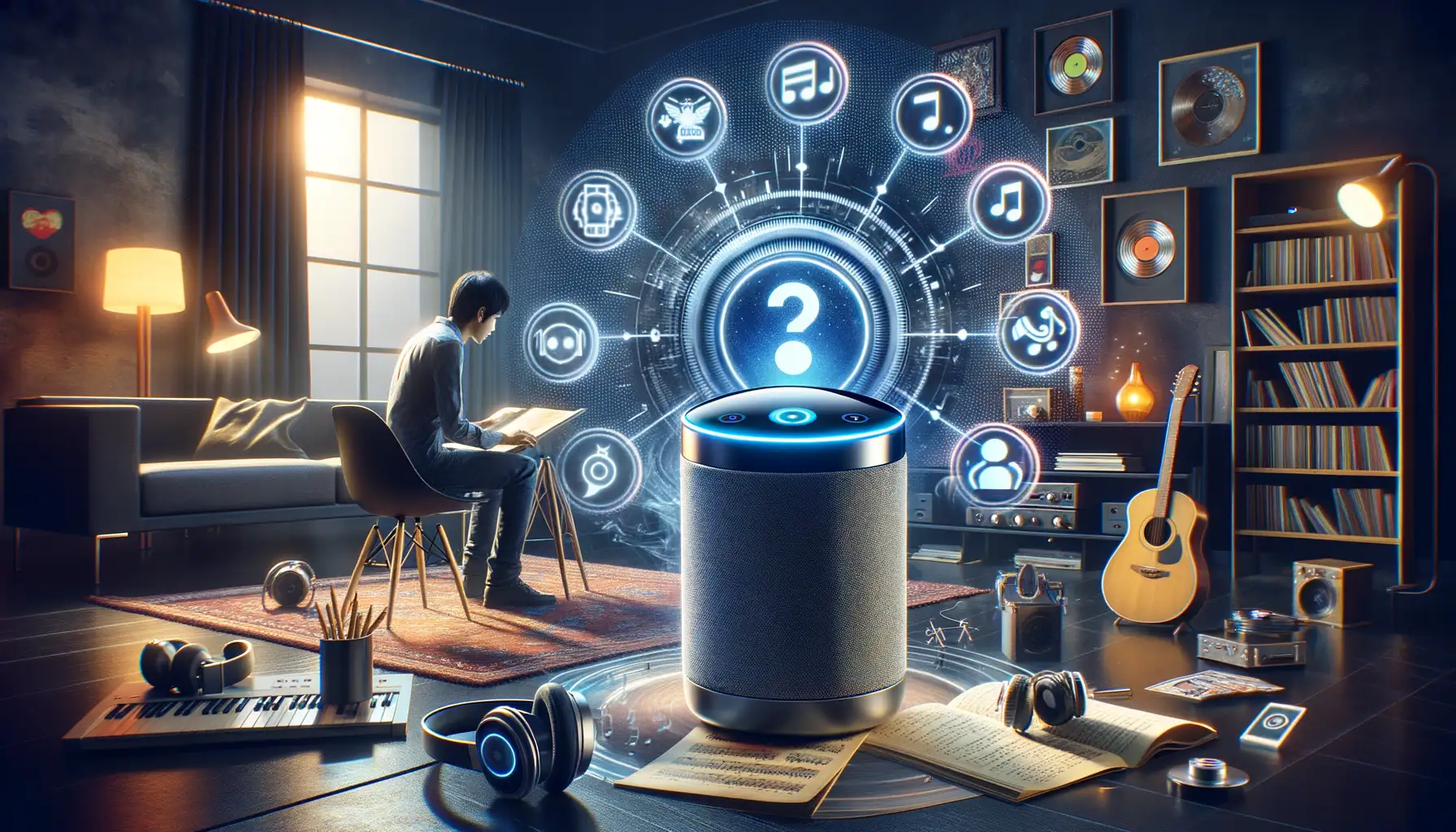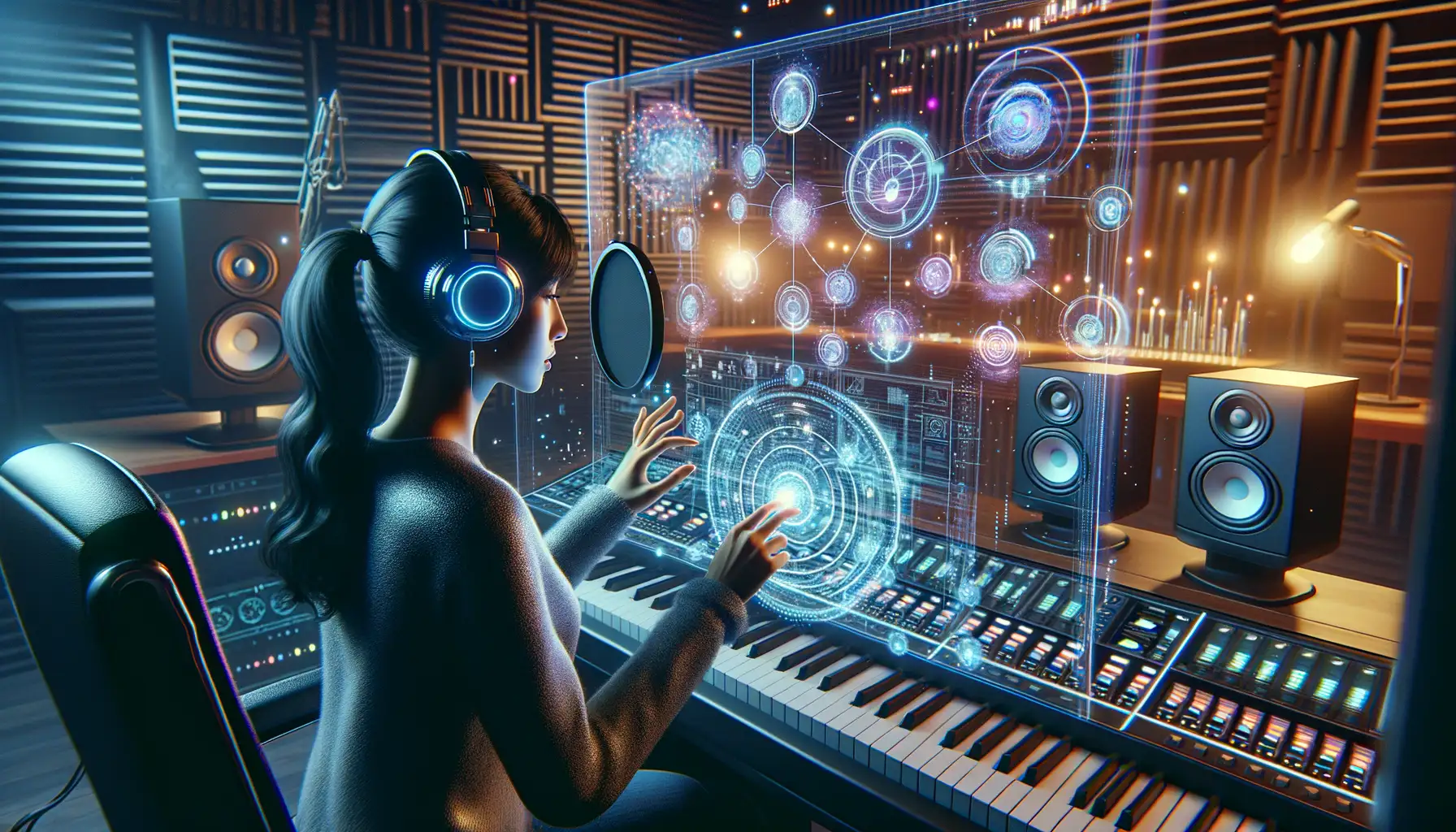Introduction to Voice-Activated AI in Music Apps
The Melody of Innovation: How AI Gives Music a Voice
Imagine this: you’re driving, hands on the wheel, cruising through a scenic route while your favorite song plays. Suddenly, the craving hits for something upbeat, nostalgic, or maybe just different. But instead of fumbling with your phone, you simply say, “Hey, play some 90s hits,” and voilà—a playlist unfolds like magic. That’s the soul of voice-activated AI in music apps: convenience meeting customization.
This isn’t just tech doing its job; it feels almost human. These AI assistants—think Siri, Alexa, or those embedded directly in music platforms—have learned to ‘listen’ and ‘understand’ user intent in an unprecedented way. They don’t stop at playing songs either. They can suggest artists based on your mood, create personalized playlists, and even locate obscure tracks you heard once at a coffee shop.
- Searching for songs when you only know the lyrics? Done.
- Queuing up music to match your workout pace? Easy.
- Curating background tunes for a romantic dinner? It’s handled.
In moments like these, voice-activated AI feels less like software and more like your personal DJ, perfectly attuned to every beat of your day.
How AI is Redefining User Interaction in Music Platforms

Elevating the Listening Experience with Smarter Interactions
Imagine opening a music app and, instead of mindlessly scrolling through endless playlists, you simply say, “Play something to help me focus.” Within seconds, your favorite lo-fi beats or instrumental tracks fill the room. That seamless, almost magical interaction? It’s all thanks to AI reshaping how we engage with music platforms.
Today’s AI doesn’t stop at basic commands like “Next song” or “Volume up.” It’s becoming more intuitive, almost like a personal DJ who knows your mood better than you do. Voice-activated assistants powered by AI excel in responding to cues like energy level, time of day, or even past listening behavior. Picture this: it’s Friday night, and you utter, “Set the vibe for a party.” Suddenly, you’re transported into a world of upbeat anthems and dancefloor hits tailored just for you.
- Contextual recommendations: AI learns when you prefer soft acoustics versus high-energy tracks.
- Natural conversations: No clunky phrasing needed—just talk to it like a friend.
This isn’t tech for tech’s sake; it’s about removing the friction between you and the music that moves you.
Key Features Driving the Popularity of Voice Assistants in Music Streaming

Seamless Hands-Free Control That Feels Like Magic
Imagine you’re in the kitchen, elbow-deep in cookie dough, when suddenly your favorite song pops into your head. No need to fumble with your phone or smudge your screen—just say, “Hey Alexa, play ‘Blinding Lights’ by The Weeknd,” and voilà! Voice assistants bring a sense of agility and ease that feels almost otherworldly. This hands-free control has become a game-changer for multitaskers everywhere, making music streaming not just convenient, but downright liberating.
The magic doesn’t stop there. These smart assistants can adjust your volume, pause tracks, skip that one song you’ve heard too many times, or even create entire playlists based on a single command like, “Play chill vibes for a rainy afternoon.” It’s like having your personal DJ who actually listens to what you want!
Hyper-Personalized Listening, One Command Away
Voice assistants go beyond requests—they start to understand *you*. With features like behavioral learning, they remember your most-played artists, favorite genres, and even predict your mood based on past habits. Imagine asking Siri to play a study playlist, and being greeted by a mix of lo-fi beats and acoustic covers—the exact vibe you didn’t realize you needed.
Here’s what makes this tech even more lovable:
- Context-aware recommendations: Ask for workout music, and boom, adrenaline-pumping bangers tailored to match your pace.
- Multi-device connectivity: Start a song on your smart speaker, then seamlessly switch to headphones as you leave the house.
- Real-time interactions: Change tracks mid-run, hands-free, or ask, “What song is playing?” if you stumble upon a new gem.
It’s not just about listening anymore—it’s about building an ongoing, dynamic relationship with the way you experience music.
Challenges and Limitations of Integrating Voice Assistants in Music Apps

The Hidden Struggles of Marrying Voice Tech with Music Apps
Integrating voice assistants into music apps may seem like a match made in tech heaven, but let’s not sugarcoat it – there are challenges lurking beneath the surface. For one, accuracy isn’t always a friend. Ever tried requesting your favorite indie playlist, only for the assistant to serve up a random polka collection? Frustrating, right? Background noise, regional accents, or even a slight mispronunciation can throw the entire experience off course, leaving users feeling unheard – quite literally.
There’s also the elephant in the room: privacy concerns. Many voice assistants constantly listen for wake words, triggering anxious thoughts like, “Is this thing eavesdropping on my late-night jam sessions?” It’s a legitimate worry, especially when apps collect data to refine personalization.
- Device compatibility: Not every speaker, phone, or smartwatch plays nicely with advanced voice features.
- The dreaded “lag”: Nobody likes waiting five seconds after saying “Skip track.”
And let’s not forget the creative limitations. While voice commands make basic navigation easier (play, pause, skip), crafting a complex playlist or diving deep into an artist’s catalog can still feel clunky and unintuitive.
The Future of Voice-Activated AI in the Music Industry

How Voice-Activated AI Is Tuning the Future of Music
Imagine having your own personal DJ who understands not just your music preferences but your mood, your timing, and even those moments when you crave nothing but silence. That’s the world we’re stepping into with the rapid evolution of voice-activated AI in the music industry. But let me take it a step further—this isn’t just about skipping tracks hands-free anymore. It’s about evolving how we experience music altogether.
Let’s talk possibilities. Picture asking your voice assistant: “Can you play me something I’d love from 2005?” In seconds, Spotify, Apple Music, or another platform could compile a nostalgia-infused playlist, curated just for you. Or perhaps you’re a budding musician? Imagine saying, “Compose a backing track in E minor, inspired by Radiohead.” Suddenly, AI assistants aren’t just serving consumers—they’re collaborating with creators.
- Interactive song recommendations that adapt to your life events
- Real-time lyric translations for multilingual tracks
- Voice commands that fine-tune sound equalizers based on room acoustics
The future of voice-activated AI is not just smart; it’s intuitive. It’s like having a poet, producer, and music historian in your pocket—ready to create magic with a simple phrase.

